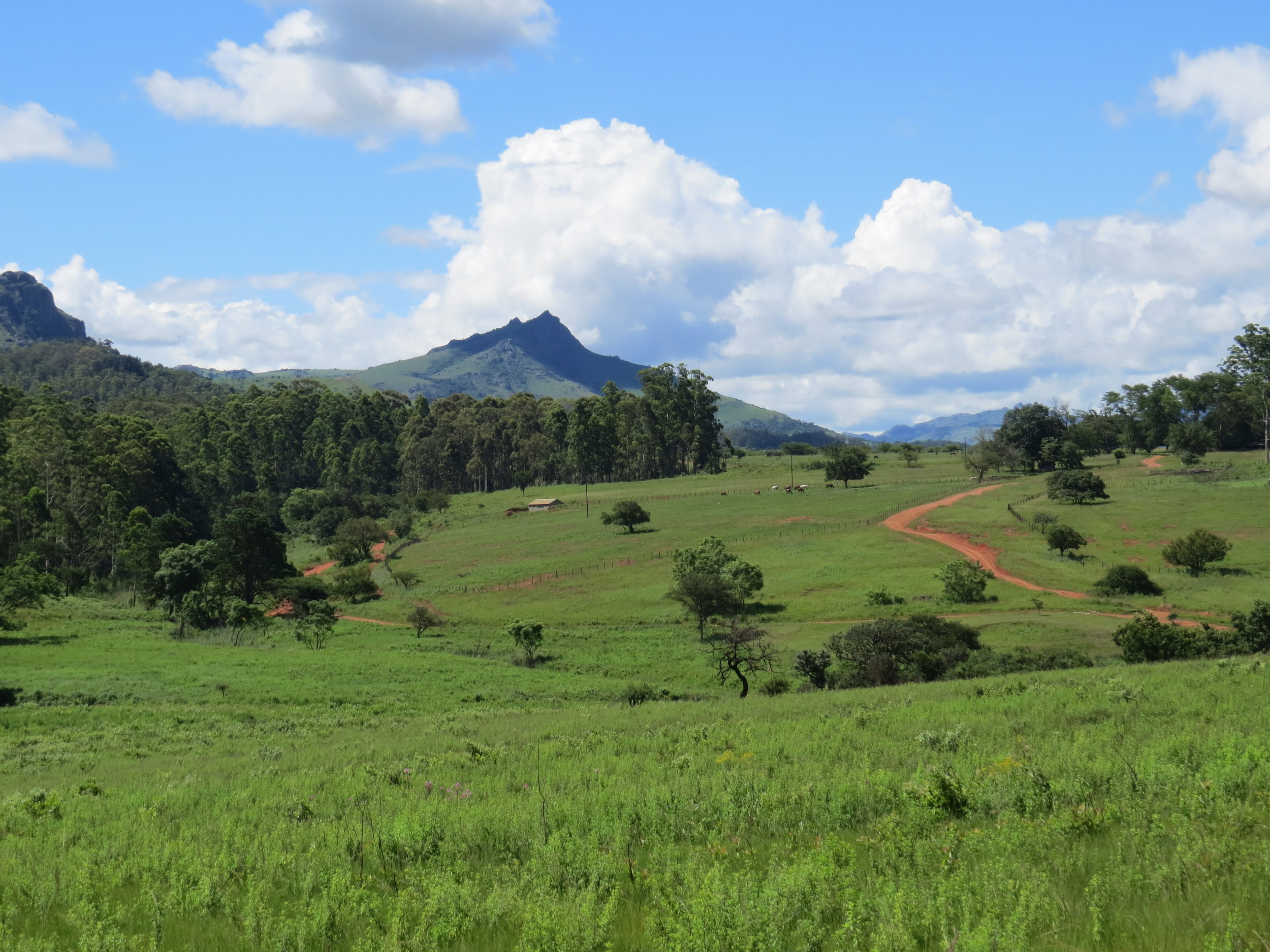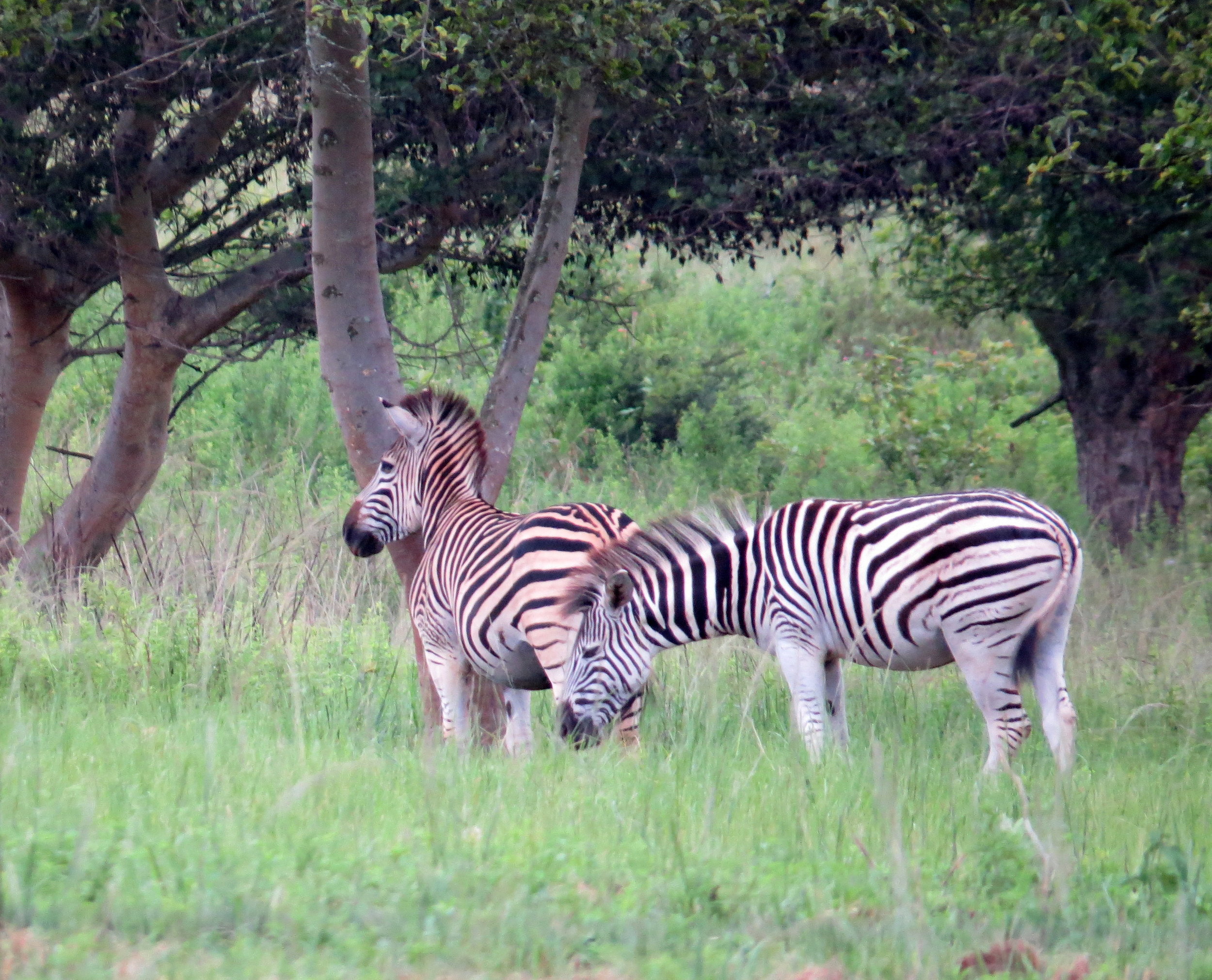Kingdom of Swaziland ... pocket poor, culturally rich
Slightly smaller than the state of Massachusetts, Swaziland is Africa's smallest country. Swaziland, the only country in Africa not practicing multi-party democracy, is one of the world's last remaining absolute monarchies. The King rules! Surrounded by South Africa and Mozambique, we decided to pass through and spend a few days on our way north to Kruger National Park.
Some Swazi trivia ...
Sadly, Swaziland has the world's highest known HIV/AIDS prevalence rate with an estimated 28% of its 1.2 million population HIV-positive.
Swaziland game rangers are allowed to shoot to kill without fear of prosecution anyone suspected of poaching.
The mountains in Swaziland's Malolotja Native Reserve are among the oldest in the world at 3.6 billion years.
Cattle denote a Swazi citizen's wealth and are traditionally raised as lobola, "bridewealth", the amount paid by the groom's family to the bride's family at marriage.
In 2013, a Swazi civil aviation official announced that it was illegal for witches to fly broomsticks at a height above 150m.
We stopped at South African Customs/Immigration for clearing out of the country. They stamped our passports and we drove a few hundred feet to the Swaziland Immigration/Customs offices to clear in. They asked no questions. They stamped our passports. We paid our R50 and voilá … we were visitors in the Kingdom of Swaziland.
Swaziland, or just Swazi as locals call it, is a little country with a population of ~1 million people. We traveled north on the MR8, then west on the MR3, heading towards the Mlilwane Wildlife Sanctuary. We weren't sure what to expect, but the roads were well-paved highways with the usual cows milling along the side to add a bit of excitement to the driving experience. The houses were not so different than the Zulu thatched huts we'd seen in South Africa.
We reached Mlilwane on mostly gravel roads. The local inhabitants showed up to greet us as we entered, including a croc lazing in the sun. We passed a huge orange mound en route to the registration center which turned out to be a rather magnificent termite hill, thriving and protected within the park's gates.
Our hut was waiting for us and proved to be quite spacious, comfortable and cool. There was a Dutch entry door and Vusi, our host, explained that we should keep the bottom closed at all times … warthogs like to explore! We lugged our stuff to the hut and relaxed awhile. When we heard the “dinner drums”, we joined a French couple and an Italian fellow at a long picnic table in the open braai (BBQ) area. We enjoyed a supper of chicken stew with rice and salad served camp style. Monkeys were chattering nearby. Birds were chirping their dusk songs. Insects buzzed and flitted by. We made our way back to our little hut just as darkness fell. We heard night sounds of animals nearby but soon all was quiet and the camp slept.
A family of warthogs woke us up the next morning. They were just outside the hut and we could see them through the window. They scurried away when I opened the top of our Dutch entry door. Not far away, I could see zebra, impala and bontebok grazing. A delightful way to start the day.
We were warned to keep the bottom of the hut's dutch door shut ... warthogs were everywhere!
Mlilwane Wildlife Sanctuary was Swaziland's first protected area. The Reilly family first settled in the area known as Mliliwane (Swati for “little fires” caused by frequent lightning hits) in order to mine tin in late 19th century. Because of over-hunting and development, the local wildlife diminished rapidly. Ted Reilly, son of the owner and ardent conservationist, created the sanctuary on his family's farm in the late 1950s as a private endeavor when the British colonial government saw no need for another park beyond the Kruger to the north and Hluhluwe to the south. Today, Mlilwane is one of three major wildlife sanctuaries and several nature reserves in Swaziland.
The park is crisscrossed with self-drive trails and walking paths. David needed a well-deserved rest from gravel road driving and our bodies needed some exercise. The morning mist cleared and we decided to spend the day hiking and relaxing within the park. This park differs from many in that it has no big predators, and therefore, walking among the animals is allowed. We chose the Sendzela Path, a short loop into the valley and up again to the main camp, then returning to the backpackers' lodge. It was quiet and serene. Zebra came quite close before heading off in a different direction. Bontebok and impala were not as trusting and bolted as soon as they heard us coming up the path. Warthogs were curious and came close, then darted away when we made eye contact.
Our travel isn't just about wild animals and birds, we're also interested in local crafts and culture. Swaziland, as we mentioned above, is a kingdom, one of the few remaining peaceful monarchies in the world. King Mswati III rules Swaziland with the help of several advisers. There was a picture of the king in an honored place in every place we visited, whether it be a public building or a tiny stall in the crafts market. The country is bankrupt; there is 40+% unemployment; 26%+ of the population is HIV positive and TB is rampant. Still, the people seem happy.
I'd read about Swazi Candles and had seen some of their products. This is a Swasi women's endeavor and profits go back to the community. We watched candles being made, then browsed in the shop which was well-laid out and appealing. It wasn't only candles. There were heaps of handmade Swazi baskets and other craft offerings. This is our kind of place to buy souvenirs and we stocked up on elegant, African-motif candles and baskets. We stopped at a few more conventional, touristy shops, but bought nothing though the 6' carved giraffe was appealing.
At one of several roadside markets, there was stall upon stall of crafts, mostly identical … carvings, batiks, jewelry, cheap souvenirs. It was hot and humid as we moved from cramped, tiny stall to stall. The vendors welcomed us warmly and asked us to look at their offerings, trying hard to make a sale. It was hard to refuse, but we were sweaty and thirsty and ended up buying nothing, but a small batik print. It was simply too hot to shop.
The national languages are English and Swati. Hello in Swati is Sawubona (hello to one person) or Sanibonani (if two or more people).
The currency in Swaziland is the lilangeni … the plural is emanlangeni (E).
The Swazi currency is tied 1:1 directly to the South African rand. Conveniently, we could use rands to pay for anything, but invariably received emanlangeni in change, which is not accepted anywhere but in Swaziland. This proved to be a bit of a problem when we left the country and constantly confused the two currencies - much to David's chagrin. Needless to say, we had quite a few more emanlangeni when we left the country than we planned on.
One afternoon, we visited the Swazi Cultural Village for a tour of a replica village as well as a traditional singing and dancing performance. Though the guide was quite informative, there was nothing in the “traditional village” except several thatched huts, and some of them were missing. The village was sterile. There were no accessories, no embellishments, no people, no signs of life … a deserted village, a grouping of empty huts.
A grouping of empty huts, but no people, no signs of life.
We were asked for money at every turn. Beyond the admission fee, we were asked to: Tip the guide, please. Tip the singers and dancers, please. Buy some crafts, please. It was hard to say no, but it left a sour taste in our mouths. Some of the singers and dancers were quite enthusiastic and we enjoyed their performances. Other participants, however, were ho-hum about the whole thing, arriving late and appearing totally bored throughout the performance. We felt as if our presence was an imposition and they obviously had much better things to do than entertain guests and share their culture.
Young Swazi men showed lots of enthusiasm doing traditional dances.
After four days, we ended our Swazi visit with a night at the Mantenga Lodge, not far away from the cultural village. The room was nice and, thankfully, air-conditioned, since the heat and humidity were getting to us. Dinner was at the lodge's restaurant and it was an elegant outdoor affair, though casual. The view of Execution Rock was exceptional from our seats in the restaurant. We'd just learned at the cultural village that the Swazis used this rock as their form of punishment for major crimes such as murder, adultery and witchcraft. They dragged the guilty parties to the top of the rock and forced them to jump off to their deaths. By the way, Swazi men were free to practice polygamy and still are. King Mswati III has 15 wives and counting. Who'd have time for adultery
Casual dining at the Mantenga Lodge with a view of Execution Rock in the distance
The question is, I guess, did we really experience Swazi culture? The well-choreographed tour and presentation at the Cultural Village was disappointing. Don't get us wrong. We enjoyed our time in Swaziland. It's a beautiful country, but we came away knowing not much more about the culture than we knew from our research before arriving. Immersion is the key to learning about a culture and four days at tourist lodges just doesn't cut it. But ... that's all the time we had and better four days than never having experienced Swaziland at all.




































